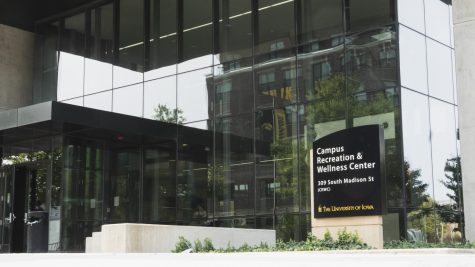University of Iowa researchers use pacemakers to help patients with heart failure
In a new study led by doctors Denice Hodgson-Zingman and Leonid Zingman, UI researchers found mimicking exercise using pacemakers helps patients experiencing heart failure and other cardiovascular problems.
February 2, 2022
University of Iowa researchers found using pacemakers to stimulate a patient’s heart rate can protect the heart from injury and mimic the benefits of exercise.
Nearly 6.2 million adults in the U.S. have heart failure. In 2018, heart failure accounted for 379,800 deaths in the U.S., according to the Centers for Disease Control and Prevention.
Exercise is one of the most successful tools to help patients with heart failure and other cardiovascular problems, UI Professor of Internal Medicine Chris Benson said.
“The benefits of exercise are becoming increasingly understood, showing that it seems to be good for your health and can be used as a therapeutic tool in many different disease conditions,” Benson said.
Since people aren’t always able to exercise, finding an alternative would benefit patients and their ability to recover, said Denice Hodgson-Zingman, one of the lead researchers and UI associate professor in the department of internal medicine.
The researchers took mice that weren’t exercising and used pacemakers to increase their heart rates, Hodgson-Zingman said. Her team accelerated their rates, kept them elevated, and then cooled them down to see how their hearts changed over time.
When comparing the mice in the control group who weren’t probed and paced, Hodgson-Zingman said the team saw promising results.
“We found that adapting to the heightened need for a higher heart rate played an important role in remodeling the hearts of the mice,” Hodgson-Zingman said. “Heart rate plays an important role in strengthening the heart, so using pacing to speed up the hearts is really useful.”
Benson said the tool could be beneficial in humans, including many of his patients who have cardiovascular problems.
“The technique of pacing the heart at a fast rate for periods of time is potentially mimicking one of the components of exercise,” Benson said. “The research shows some benefit in mice and maybe humans with heart failure.”
The pacing technique could have benefits in people who are unable to exercise because their heart is too weak, for example, Hodgson-Zingman said. The goal isn’t to stop people from exercising, but to help people be able to exercise and strengthen their heart.
Hodgson-Zingman said the team of researchers is working on testing this in humans, with the initial results published in November. She said the team hopes to study people who already have pacemakers and they’re currently enrolling people who have heart disease in their clinical trial.
Leonid Zingman, another lead researcher on the project and a UI associate professor of internal medicine, said the team is excited about this project because it’s an easy and inexpensive way to help patients.
“We’re really excited about this project and can see a significant translational potential for people,” Zingman said. “Half of the patients with severe heart failure will die and not survive more than five years after their diagnosis.”
He said the research team is working hard as a team to move the project forward with from the National Institutes of Health.
Benson said other UI researchers are excited to see the benefits in the cardiovascular medicine field.
“Something incredible about the university is that the research community shares all the information and data that we get with each other,” Benson said. “We are constantly meeting with each other and talking about our data so we can share it and build upon what other people are doing.”




















